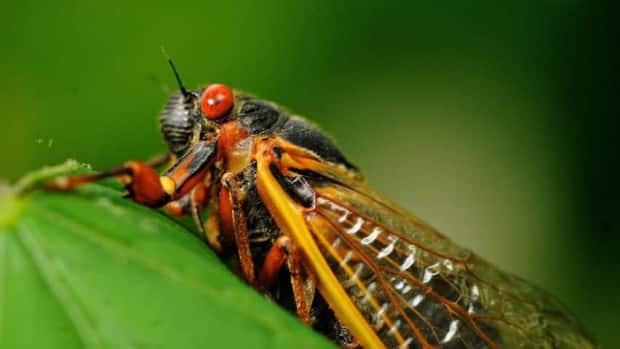Alberta has cicadas too, but not massive 'Brood X' numbers emerging in U.S. after 17 years underground

Entomologists are bracing for a big event in the bug world, as a massive swarm of cicadas is expected to emerge across the eastern United States after spending the past 17 years underground.
Brood X, also called the great eastern brood, is the largest known brood that has been recorded, Alberta entomologist Ken Fry told the Calgary Eyeopener.
Brood X is getting a lot of attention, but their less-famous cousins will also be making an appearance this year, not far behind — and not in the same numbers.
"They're very secretive animals, it's tough to get your eyes on them," Fry said. "In the wooded areas of pretty much all of Alberta, we do have them, it's just they don't come out in these huge, huge broods."
Seven species in Alberta
Fry said that here in Alberta, we have seven species of cicada. The genus name is Okanagana, and the most common species is occidentalus.
They are both smaller and less abundant than Brood X. The massive brood in the eastern U.S. has been living quietly underground for 17 years.
"Periodical cicadas are a really unique group of animals, they spend all this time underground feeding on the roots of trees, and just happily existing below ground, safe and sound. And then they synchronously emerge," Fry said, adding there are both 13-year cicadas and 17-year cicadas.
"And they just come out en masse, some estimates are upwards of three million animals per hectare. It's just a massive emergence every 17 years."
The noise will be impressive.
"A cacophony of noise, let me tell you," Fry said. "The males will fly up to trees, roosting anywhere from three to five metres above the ground, and then they have what's called a resonance chamber, so they pass air past a membrane which amplifies the sound like a buzz or a scream. And when you get this many animals synchronously calling out for a mate, it is a super loud noise."
The cicadas will carry on for a few weeks of their four to six-week lifespan.

"The mating calls are short-ish, about two to three weeks at most, and it starts out with the early emergence and then as the bulk of them emerge, then you get this crescendo of noise, and then it peters off as the last ones wake up and come out," Fry said.
Here in Alberta, the smaller species of cicadas we hear are on a shorter schedule.
"Ours are not the 17-year periodical cicada," Fry said. "Depending on species, they can go underground from three to five years. They're not that abundant, so we don't have this cacophony of noise every three to five years, instead there's just the odd one that comes out."
Listen to the full interview on the Calgary Eyeopener here:
The cicadas are harmless — unless you're a tree. Female cicadas will cut into tender branches to lay their eggs.
"And then those nymphs, or the immature stages, will hatch, and then proceed to go into the ground and take up another 17 years underground. So it is a bit of a problem — well, for us, the noise, for a short-lived period — but for the trees themselves there's some significant damage, so this year's growth is set back significantly," Fry said.
But there's an upside for the ecosystem in a year of plentiful cicadas.
"All the squirrels and birds and other animals are just gorging themselves on this feast every 17 years, and it's thought by some ecologists that this abundance of food allows certain populations of birds and other animals to sort of regain their populations," Fry said.
"So they gorge themselves, they can have larger numbers of offspring, so they're more successful this year … so, it does have an overall ecological benefit in restoring some health to some other animal populations."
With files from the Calgary Eyeopener.

